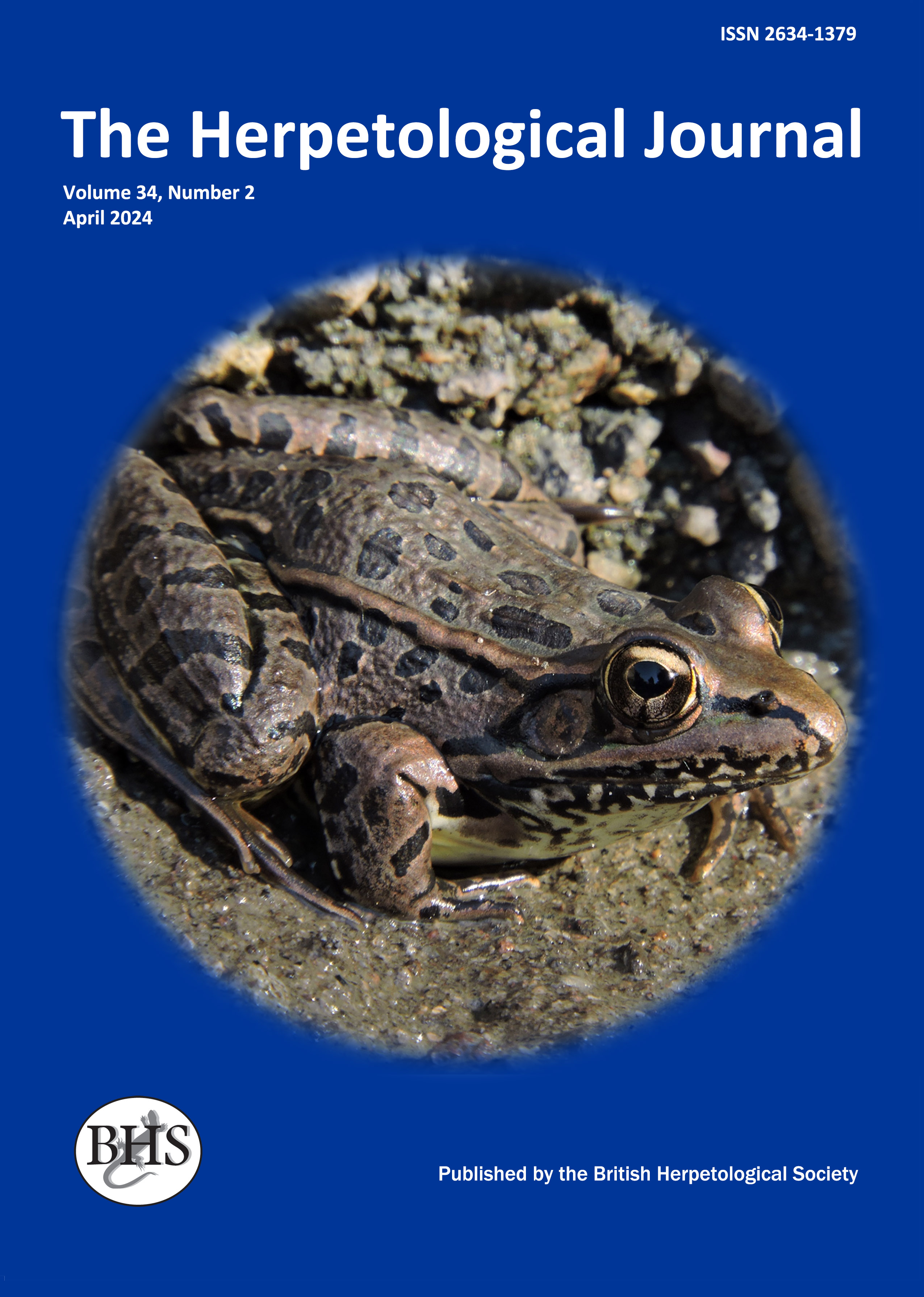
The Herpetological Journal
The Herpetological Journal is the Society's prestigious quarterly scientific journal. Articles are listed in Biological Abstracts, Current Awareness in Biological Sciences,Current Contents, Science Citation Index, and Zoological Record.
ISSN 0268-0130
2021 Impact Factor from Clarivate for the Herpetological Journal is 1.194, an increase of 0.332 from 2020.
pdf 04. Chemical Assessment of Predation Risk in the Wall Lizard, Podarcis muralis, is Influenced by Time Exposed to Chemical Cues of Ambush Snakes
1139 downloads
Open Access
pp. 21-25
Authors: Amo, Luisa; López, Pilar & Martín, José
Abstract: Lizards often respond to predator presence by increasing refuge use. However, this behaviour may expose lizards to saurophagous snakes, which inhabit the same refuges to ambush their lizard prey. Snakes, which are not always visible, deposit chemical trails that can be detected by lizards. Even though there are obvious advantages of using chemical cues, chemical detection of predators might lead to very conservative estimates of risk. This is because chemical cues might indicate that an area was risky in the recent past, but not necessarily at the current time. We examined experimentally whether wall lizards (Podarcis muralis) avoid using refuges that contain chemical cues of smooth snakes (Coronella austriaca), and whether this avoidance response is maintained long term or whether it can be modified. Results suggest that wall lizards detected the chemical cues of smooth snakes inside refuges, and, in the short term, decreased the use of predator-scented refuges and increased their escape movements. However, this avoidance response seemed to decrease in the long term. By investigating the refuge again over subsequent time periods, lizards reassessed whether the snake was actually present, modified their refuge use and decreased their avoidance response. Therefore, wall lizards seem able to assess temporal variations in predation risk by snakes inside refuges and to respond accordingly.
Keywords: CORONELLA AUSTRIACA, PREDATOR-PREY INTERACTIONS, CHEMORECEPTION, BEHAVIOUR

